Although small, couplers play a big role in smooth, reliable operation. If couplers function properly and are installed per the manufacturer’s instructions, you should have few, if any, problems. In this guide to HO scale couplers, we’ll explore some of the different offerings on the market today.
The evolution of HO scale couplers
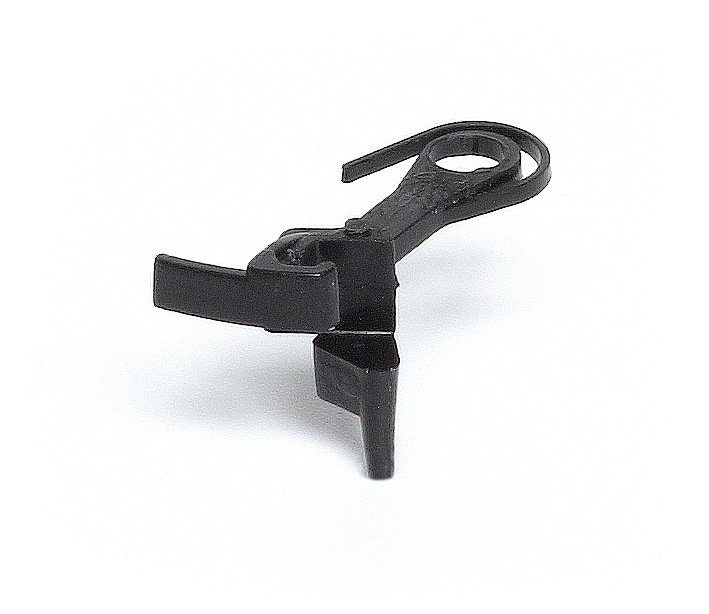
When HO scale was in its early years, rolling stock featured either manufacturer-specific couplers or lacked couplers completely. In the latter situation, it was up to the modeler to select and install couplers.
By comparison, today’s HO scale model railroaders have it much easier. Virtually all locomotives and freight cars are equipped with some brand of operating knuckle couplers, most of which work with each other. But into the 1990s, horn-hook couplers were the standard on almost all locomotives and freight cars. Manufacturers liked horn-hook couplers because they were inexpensive to make (there were no moving parts) and the design could be used without charge.
While horn-hooks are easy to couple, they have a couple of major drawbacks. First is their appearance. Horn-hook couplers look nothing like couplers found on full-size locomotives and freight cars. Horn-hooks detract from otherwise well-proportioned, detailed, and painted models.
Horn-hook couplers have problems when it comes to operations, too. They are difficult to uncouple by hand and can’t be uncoupled automatically. If the couplers are truck-mounted, as was often the case on train-set and entry-level models, side forces while cuts of cars are being pushed tend to skew the trucks, which can lead to derailments (especially on curves).
The Kadee revolution
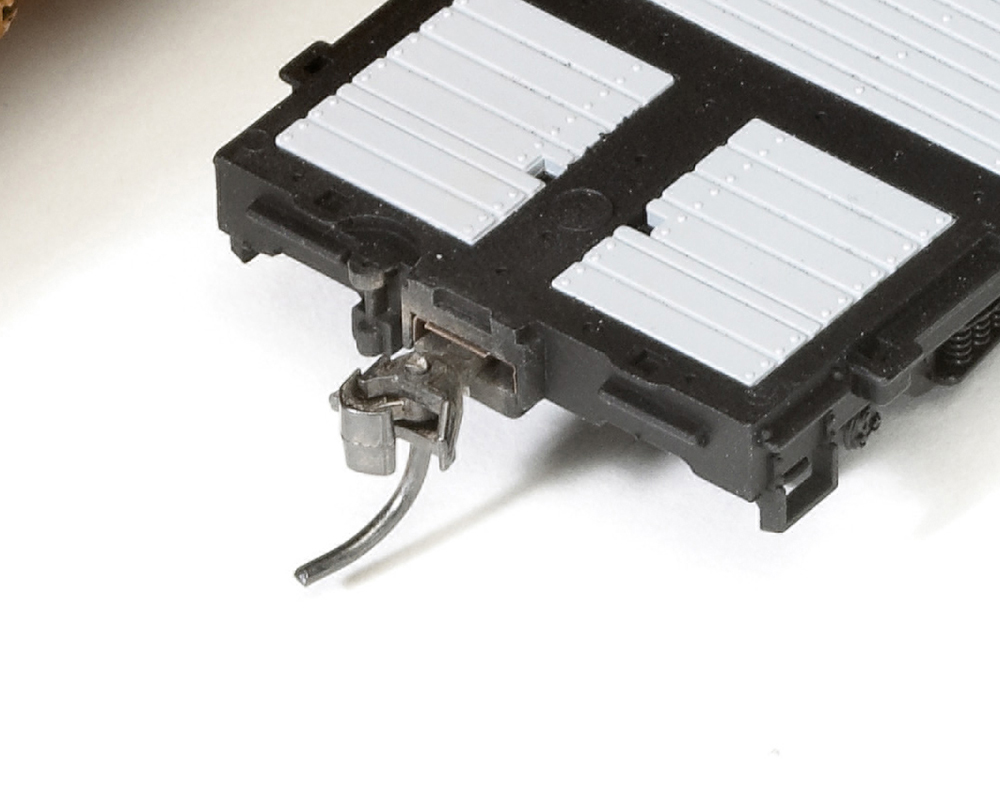
An alternative debuted in 1953 when brothers Dale and Keith Edwards introduced their first Kadee knuckle coupler. Seven years later, the duo unveiled the Kadee Magne-Matic coupler. The new coupler looked more like the real thing, operated well, and was easy to install. The Kadee coupler quickly grew in popularity with modelers, and is the de facto standard in the hobby. For many years Kadee couplers were only available as aftermarket products. Today, they’re featured on high-end models from ExactRail, Moloco, and Tangent Scale Models, among others.
Magne-Matic couplers are made of cast zinc alloy and feature a bronze coil knuckle spring. The trip pin is made of soft iron. A small lip cast on the inside of the knuckle prevents the couplers from separating when passing over an uncoupling magnet.
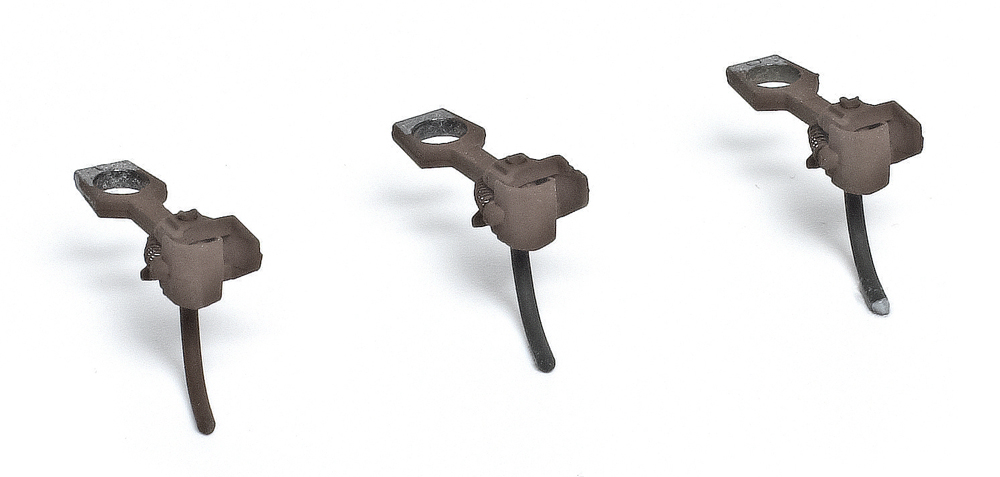
Some modelers remove the trip pin and install separate aftermarket air hoses on their models for a more prototypical appearance. However, this means uncoupling can only be done manually, as the trip pin is necessary to separate the couplers over a magnet. Others paint the trip pin black or dark gray to simulate an air hose.
Though Kadee has a robust lineup of dozens of coupler models, the most popular has long been the No. 5. It features a 9/32″ shank (the distance from the center of the mounting pin to the back of the knuckle head) and a bronze centering spring. The No. 5 coupler fits with little or no modification in coupler boxes on most freight car models from Accurail, Athearn, Bowser, and Walthers, among others.
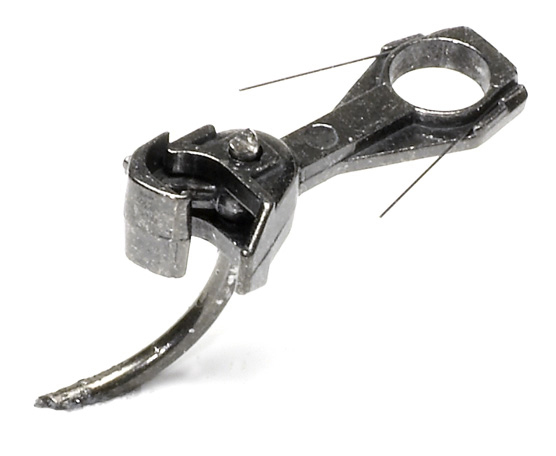
“Whisker” couplers are the latest addition to Kadee’s product lineup. The all-metal couplers have thin built-in centering springs on the shank, eliminating the need for the separate phosphor-bronze springs used on standard Kadee couplers. The hole in the shank is designed to fit around the 1/8″ boss in most draft-gear boxes. The No. 148 is the whisker equivalent of a No. 5 coupler.
The Kadee coupler line is explained in detail in the firm’s 52-page catalog and on its website. If you do a lot of freight-car modeling, you’ll find it handy to get sampler test kit no. 13, which includes one each of the no. 5, 20- and 30-series insulated couplers (these feature plastic shanks and cast-metal knuckles to prevent short circuits), standard and scale whisker couplers, draft-gear boxes, springs, and uncouplers.
The next generation
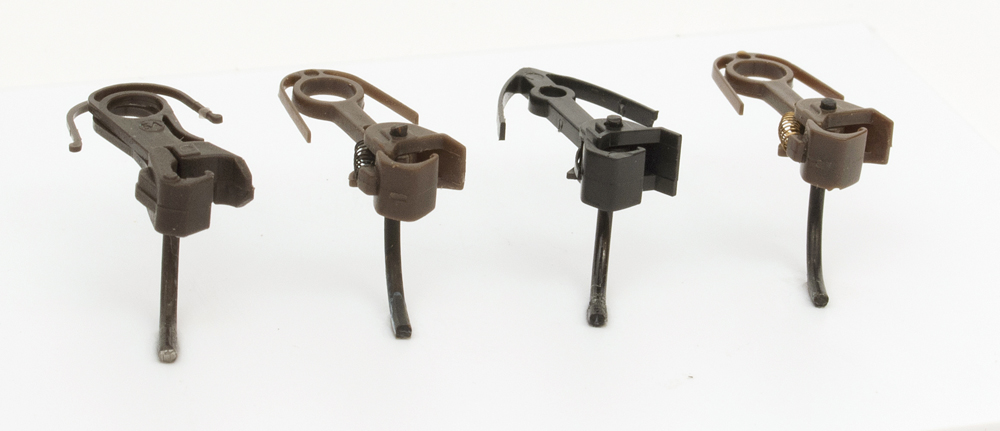
When Kadee’s original patents expired in the late 1990s, a new crop of knuckle couplers from several manufacturers began joining the market. Most of these couplers were designed to operate with Kadee couplers.
Plastic knuckle couplers are produced by Accurail (Accumate), Bachmann (E-Z Mate), and McHenry. The Life-Like coupler shown above is no longer produced. The couplers are made of tough engineering plastic with, depending on the manufacturer, a one- or two-piece design and plastic or coil metal knuckle springs.
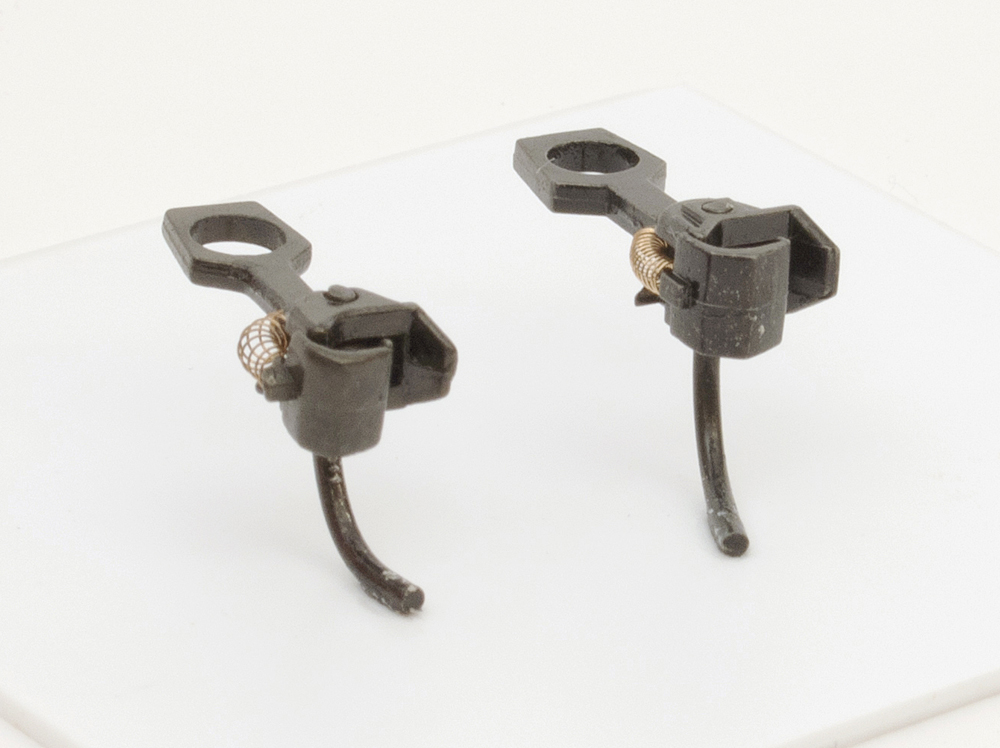
Metal couplers are offered by Rapido Trains (MacDonald Cartier) and Wm. K. Walthers Inc. (Proto-Max). Rapido couplers can be found on the firm’s locomotives, freight cars, and passenger cars. The Proto-Max couplers are used on WalthersProto and WalthersMainline cars. Both brands, which are also available as separate items, feature coil metal knuckle springs, phosphor bronze centering springs, and metal trip pins.
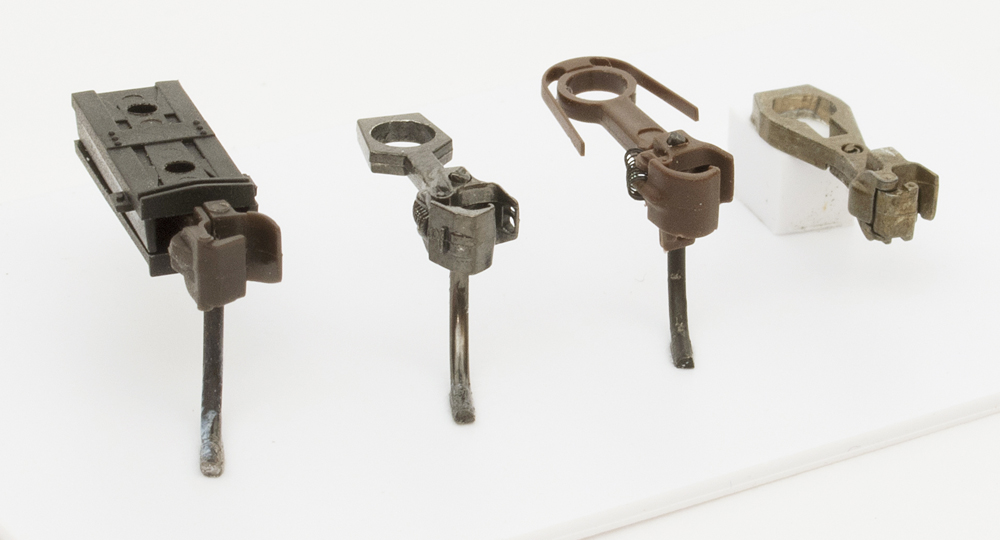
Although the couplers offered by various manufacturers look prototypical, they’re actually oversized a bit to operate more reliably. It wasn’t until the late 1990s and early 2000s that companies like Accurail, Kadee, McHenry (Athearn), and Sergent Engineering began offering scale couplers. Not only are these couplers smaller in size, but they bring the distance between cars to a more prototypical distance. Sergent Engineering went out of business in 2022, but its products may still be available on the secondary market.
Industry newcomer Aurora Miniatures uses metal AuroraJanney scale couplers on its locomotives and freight cars based on North American prototypes.
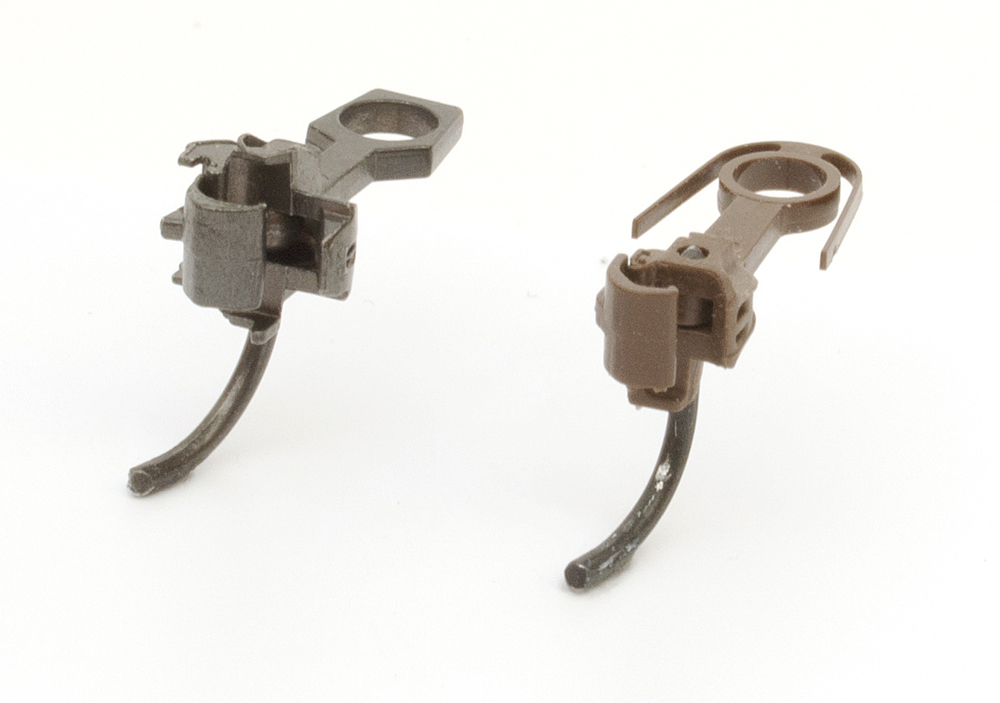
Kadee and McHenry also produce lower-shelf and double-shelf couplers to match those found on prototype locomotives and freight cars. The Kadee coupler shown above is a Type SF; the McHenry is a Type E design.
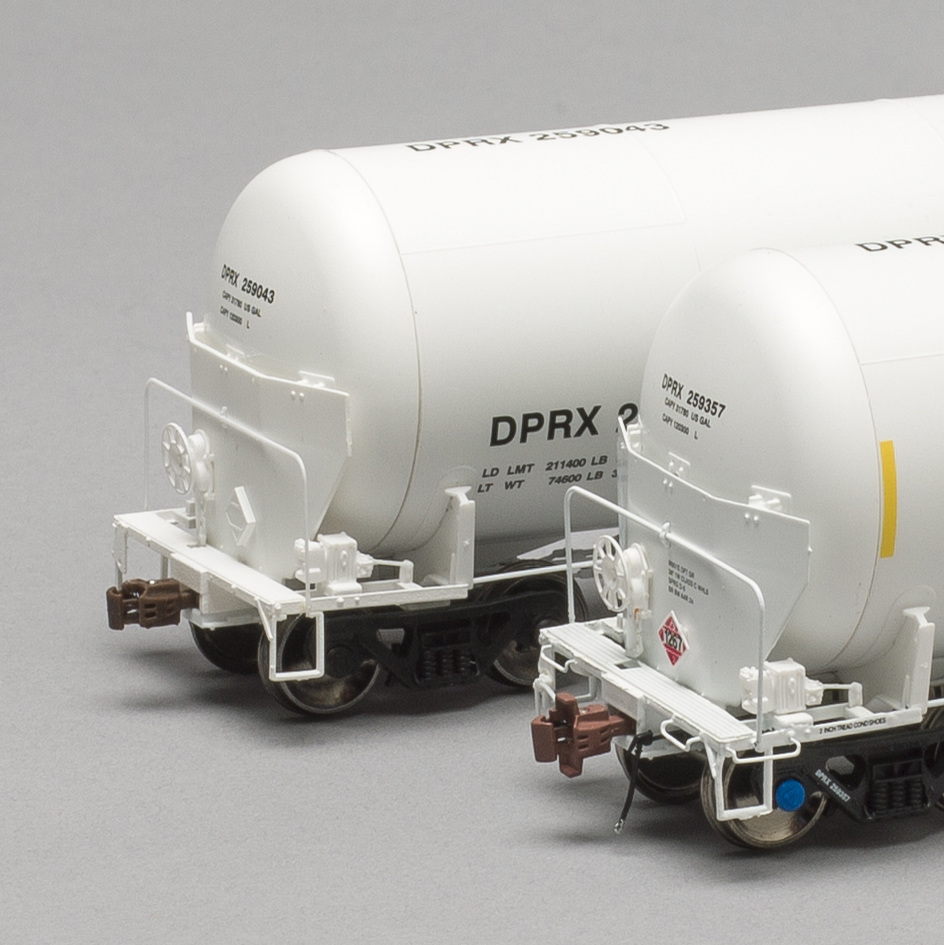
Scale Trains includes semi-scale Type E couplers on many of its locomotives and freight cars. Die-cast metal versions are used on products in the Museum Quality and Rivet Counter lines. Plastic couplers are found on Operator and Kit Classics models. The company uses die-cast metal Type SE double-shelf couplers on its Rivet Counter line Trinity 31,000-gallon tank car. The couplers on ScaleTrains models do not have trip pins.
Regardless the brand of couplers you use, make sure they are working properly and mounted at the correct height. To learn more, read my article “How to tune a freight car” in the January 2018 issue of Model Railroader magazine.














Thanks for the good general overview.
Expanding on Roger’s comment, some discussion of inter-operability would be helpful, perhaps with a chart showing which couplers reliably operate with each of the others. Maybe MR could do some bench-testing as well as conduct a reader’s survey.
Also, a quick description of what lower-shelf and double-shelf couplers are and when they began to be used would save a Google search.
Thanks again.
Not mentioned is the Kadee semi-scale coupler line, closer to scale size than standard #5 and equivalents. Most often these are used today in high-end freight car models.
Note: Some well-known modelers highly recommend that you standardize on a single coupler brand for ALL your car and loco fleet since differing brands are not always reliably compatible.